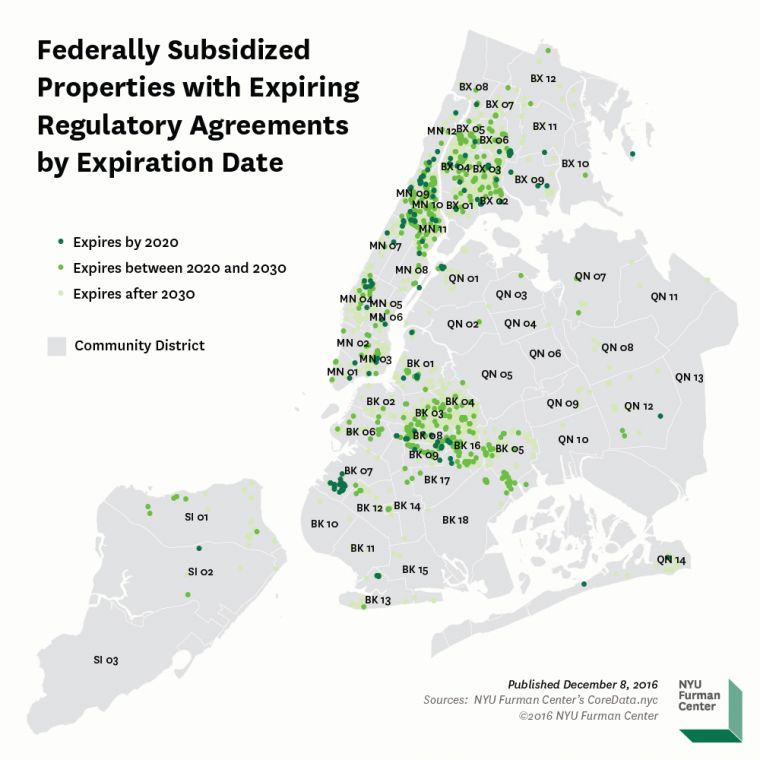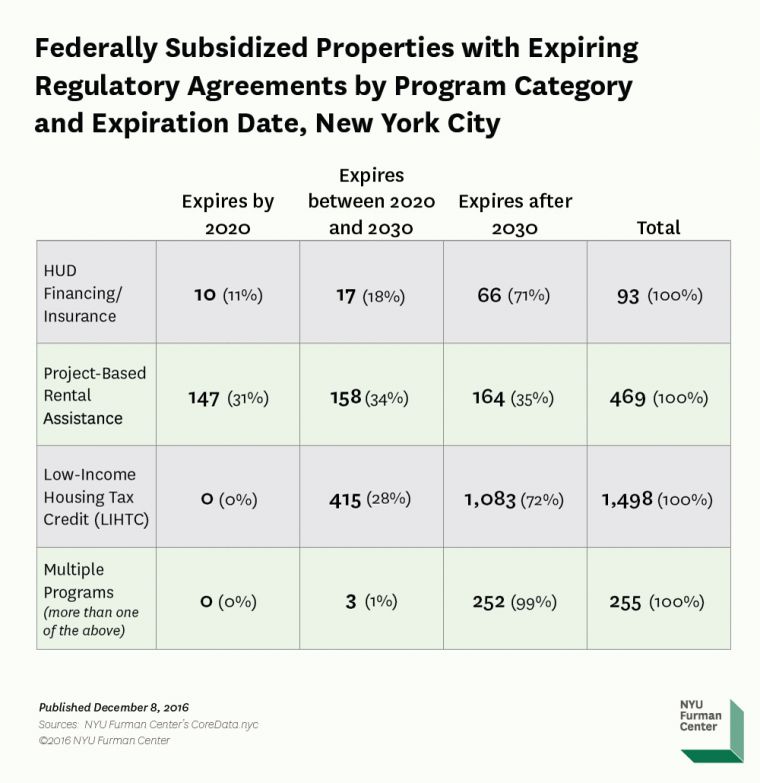
The Location of New York City’s Expiring Affordable Housing

Privately owned, publicly subsidized rental housing is an important source of affordable housing in New York City, especially for low- and moderate-income households. In exchange for a government subsidy, private owners agree to keep units affordable to low- and moderate-income households for a set number of years, typically 30 years. After a regulatory agreement expires, however, owners can begin to rent their units at market rates.
According to new data analysis by the NYU Furman Center, by 2020, the regulatory agreements governing 157 federally subsidized residential properties in New York City are set to expire. Over the following decade, an additional 593 will follow suit.
The table below provides a breakdown of federally subsidized properties by expiration date for three program categories: Project-Based Rental Assistance, the Low-Income Housing Tax Credit (LIHTC), and HUD Financing and Insurance. Properties funded by more than one of these program types are included under “Multiple Programs.”

The map (included above or view the interactive map at CoreData.nyc) shows that of the 750 properties with regulatory agreements set to expire by 2030, many are concentrated in Central Harlem (MN-10), Crown Heights/Prospect Heights (BK-08), and Brownsville (BK-16).
The Community Districts with the largest share of their federally subsidized affordable housing expiring by 2030 are Flatlands/Canarsie (BK-18), where regulatory agreements on 28 of the District’s 30 federally subsidized properties are set to expire, and Sunset Park (BK-07), where regulatory agreements for 30 of the District’s 37 federally subsidized properties are set to expire.
About CoreData.nyc
CoreData.nyc is New York City’s housing and neighborhoods data hub, presented by the NYU Furman Center.
Methodology Notes
HUD Financing/Insurance includes Section 223(f), Section 221d(3) and Section 221d(4) Mortgage Insurance, and Other HUD Financing.
LIHTC includes properties that received either 4% or 9% credits.
Project-Based Rental Assistance includes Section 202/8, Loan Management Set-Aside, Project Rental Assistance Contract / 202, Rental Housing Assistance Payments (RAP), Rent Supplement Program, Project-Based Section 8, and Other HUD Project-Based Rental Assistance.


